
New Electrochemical Technology Could De-acidify the Oceans
two cycles: 1) the biological carbon cycle stores CO2 in plant matter and soils, and 2) the aqueous carbon cycle absorbs CO2 from the atmosphere into the oceans. Each of these cycles accounts for 25 per cent and 30 per cent of emitted CO2, respectively.CO2 that dissolves in the oceans reacts to form chemicals that increase the acidity of the oceans. The dissolution of minerals from rocks along coastlines act to counterbalance this acidity, in a process called geological weathering, but the extreme increase in the rate and volume of CO2 emissions, especially over the last 60 years, has far exceeded the
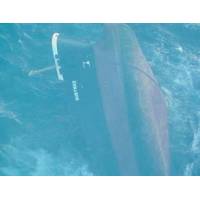
Rubymar Sinking Puts Coral Reefs At Risk
catastrophe the region has experienced in more than a decade, Sawalmih said.An overload of fertilisers can stimulate excessive growth of algae, using up so much oxygen that regular marine life cannot survive. This creates dead zones where nothing lives.Fertilizers often also contain traces of harmful chemicals which are toxic to marine life."Fishing communities along Yemen's Red Sea coast in Hodeidah and Taiz will be impacted by the contamination," said Mohammed al-Basha with U.S. analytics company Navanti Group. This could lead to lower catches and damage to livelihoods.Yemen's Iran-aligned
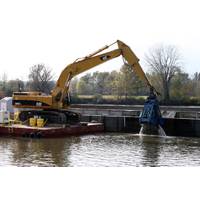
Officials Urge EPA to Remove Toxic 'Forever Chemicals' from the Hudson River
U.S. Senator Kirsten Gillibrand earlier this month stood with local leaders and environmental advocates at Albany City Hall to demand that the Environmental Protection Agency (EPA) take additional action to clean up polychlorinated biphenyl (PCB) “forever chemicals” in the Hudson River.PCBs are toxic manmade chemicals that can linger in water and soil for decades. Exposure is associated with a variety of serious health conditions, including cancer.From 1947 to 1977, General Electric dumped 1.2 million pounds of PCBs into the Hudson River north of Albany. In 1984, the EPA designated a
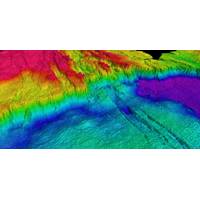
DISCOVERY: High-Res Mapping Tech Helps Find New Hydrothermal Vent Field
with up to 3-centimeter resolution. For comparison, the best shipboard sonar technologies create maps with 15- to 50-meter resolution in water depths of 1.5 to 3 kilometers.The finely detailed maps allowed scientists to locate new hydrothermal vents surrounding the Galápagos, characterize the chemicals they emit, and the animals that live on them. Fifteen species not previously known to live in the region were located by the science team, including a “living fossil” mollusc known as a monoplacophoran. They also examined a Pacific White Skate nursery which exists on low-temperature
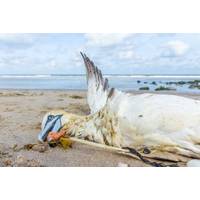
Plastic Pollution Threatens Birds Far Out at Sea
pollution poses a problem for seabirds worldwide, even outside of high exposure areas.Plastic pollution is an issueSeabirds often swallow plastic by accident, mistaking it for their food. They also ingest plastic that has already been eaten by their prey.This can lead to injury, poisoning from toxic chemicals that leach from the plastic and starvation as plastic fills up their stomach. Research from 2014 found that more than 60% of flesh-footed shearwater fledglings surpass international targets for plastic ingestion by seabirds. Worryingly, 16% of fledglings failed these targets after just one feeding

Expedition Taps New Tech to Check Deep-Sea Coral Health
/ Schmidt Ocean InstituteWhile it is widely known that shallow-water corals are struggling due to climate change, less is understood about the health of corals in deeper waters. The researchers investigated coral health by measuring their production of the ROSsuperoxide and hydrogen peroxide–chemicals that animals release for basic biological functions like eating and when responding to pathogens or environmental stress. The team found that the amount of ROS formed by corals surrounding Puerto Rico varied as a function of coral species and were substantially lower than those previously

MTR100: Deep-sea Mining May Prove Pivotal in the Climate Change Discussion
in 2023. IM hopes to reach full-scale production by the end of 2024.Its bio-extraction process offers a one-of-a-kind technique, as well. The processing technology will extract minerals from the nodules using naturally occurring bacteria to dissolve the rock into solution, eliminating the use of toxic chemicals and tailings, and lowering the energy footprint. This process is in the same phase as the robotics, with all technology currently lab based. “We have plans to construct a pilot plant facility in 2023, to develop the necessary infrastructure required with scaling of the microbial processes
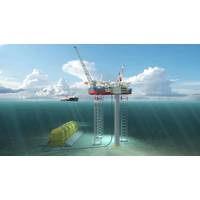
ABS, NOV Collaborating on 'Pioneering' Subsea Storage Solution
of Norway and The Net Zero Technology Centre who are working to enable an economical subsea storage solution for the market.According to the parties involved, the subsea technology brings a new and unique solution for the safe storage of larger volumes of fluids such as enhanced oil recovery (EOR) chemicals, production chemicals, oil, condensate, and maritime fuels. The subsea storage system is being designed to be placed at any water depth and adjusted in capacity depending on customer requirements.ABS NTQ process offers guidance on early adoption and efficient implementation of new technologies
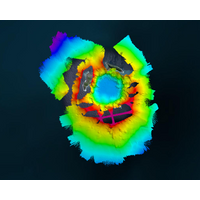
USV Collects 'Astounding' Data from First Caldera Survey in Tonga
direct water column measurements.Data collected using a conductivity temp depth (CTD) instrument, deployed using the winch, is providing important temperature and salinity information as well as dissolved oxygen and turbidity readings. A Miniature Autonomous Plume Recorder (MAPR), designed to detect chemicals in the water that are common in hydrothermal plumes, is recording light-backscattering for suspended particle concentrations, oxidation reduction potential, temperature and pressure from multiple winch dips and tows. The MAPR project is a joint initiative between NOAA in the USA and GNS Science



 February 2024
February 2024





